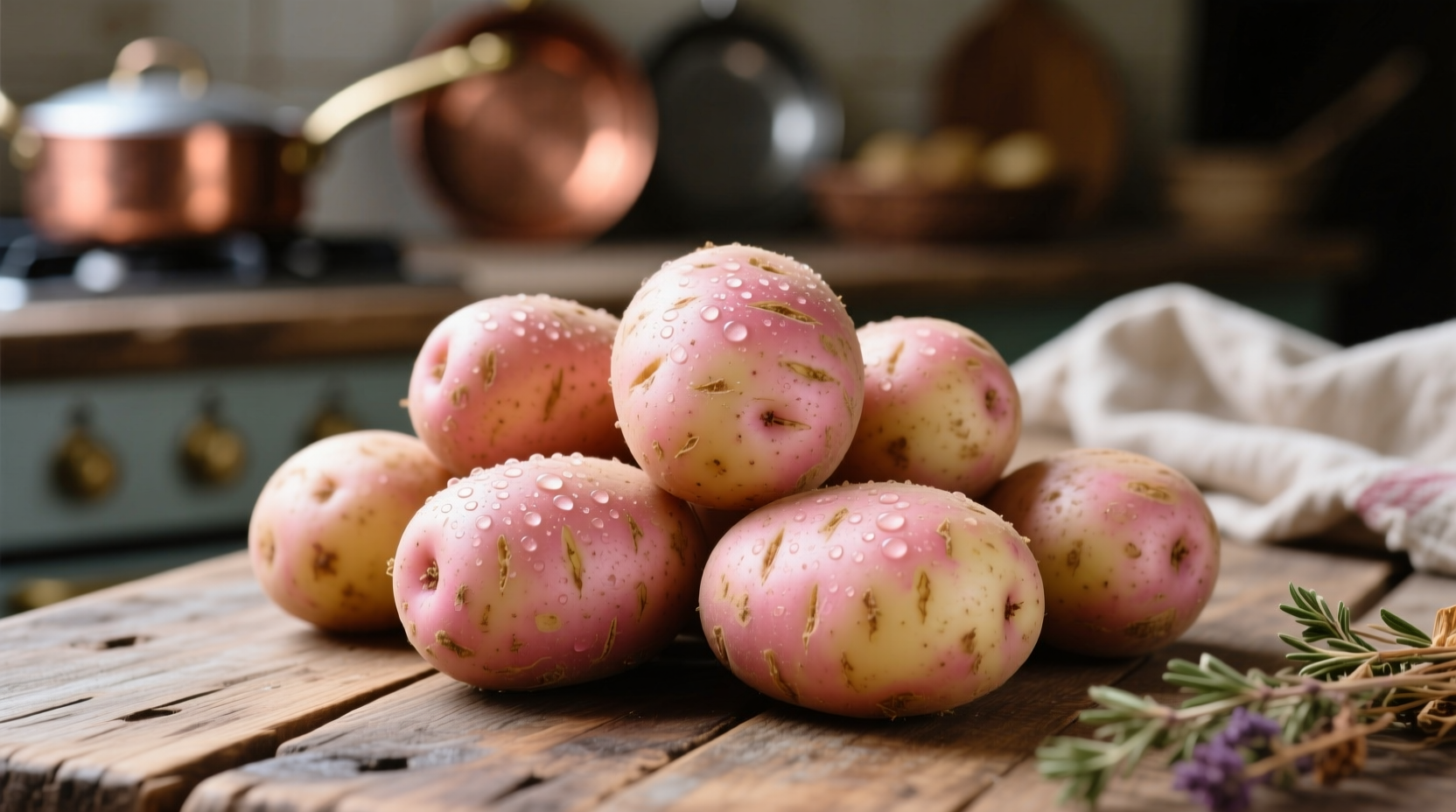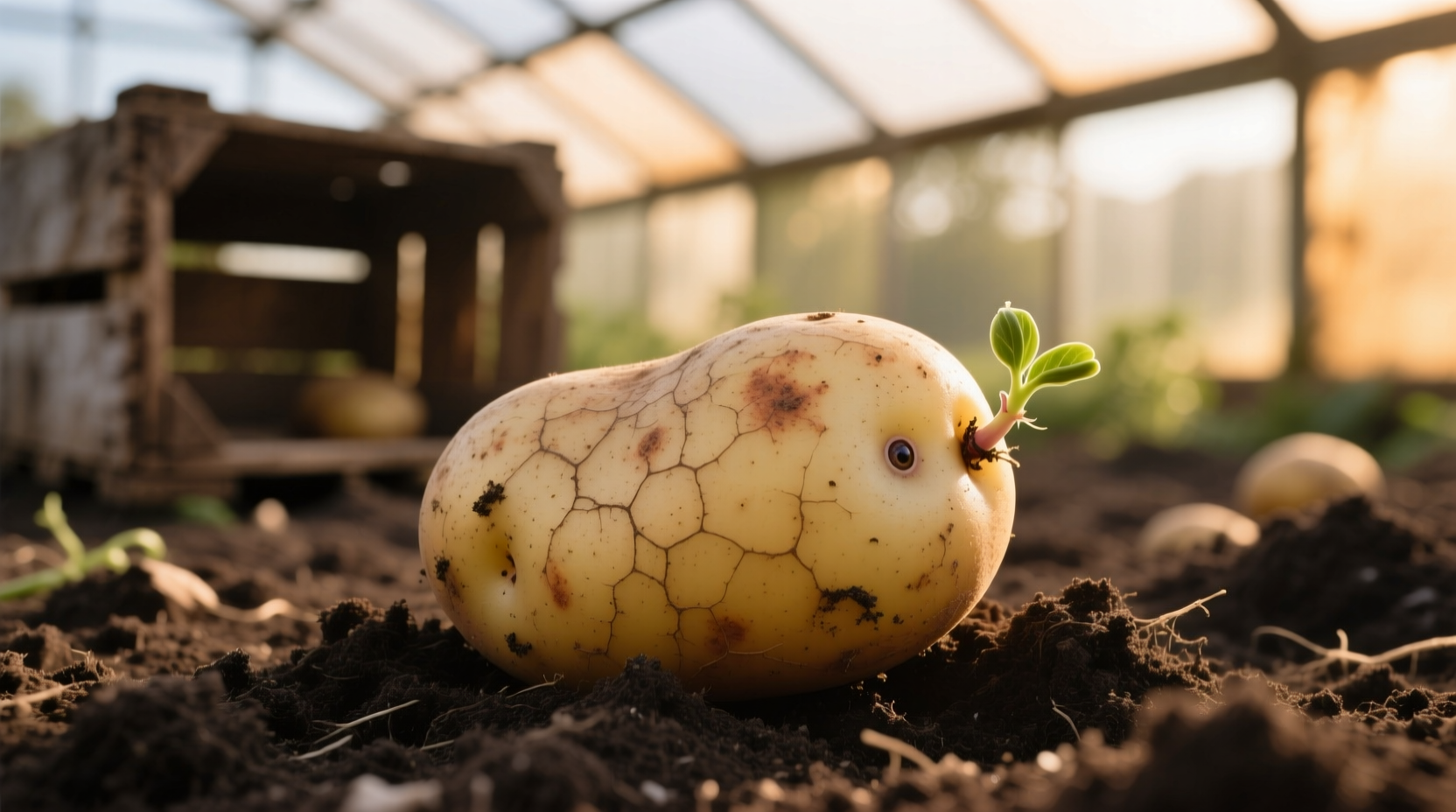When you're standing in the produce section wondering which potato variety will give you that perfect crispy roast or creamy mash, King Edward potatoes should be at the top of your list. This classic British variety has been a kitchen staple since its introduction in 1902, prized by both home cooks and professional chefs for its exceptional cooking properties.
What Makes King Edward Potatoes Special
King Edward potatoes belong to the floury potato category, meaning they have a high starch content and low moisture. This composition creates that desirable fluffy interior when cooked, making them perfect for dishes where you want potatoes to absorb flavors while maintaining structure.
Visually, King Edwards feature pinkish-red skin with shallow eyes and creamy white to yellow flesh. They typically grow to a medium to large size with an oblong shape. Unlike waxy potatoes that hold their shape well, King Edwards break down slightly when cooked—this isn't a flaw, but rather the quality that makes them exceptional for certain preparations.

King Edward Potatoes: Best Cooking Applications
Understanding when to use King Edward potatoes can transform your cooking results. Here's where they truly shine:
Perfect For:
- Roasting - Their high starch content creates an irresistible crispy exterior while maintaining a light, fluffy interior
- Mashing - They absorb butter and milk beautifully, creating exceptionally smooth, creamy mashed potatoes
- Baking - Whole baked King Edwards develop a fluffy texture ideal for topping with butter, sour cream, or cheese
- Chips/French fries - They produce the classic thick-cut British chip with perfect crispness
Not Recommended For:
- Boiling (they tend to disintegrate)
- Salads (they lack the firm structure needed)
- Dishes requiring potatoes to maintain precise shape
| Potato Variety | Starch Content | Best Cooking Methods | Texture When Cooked |
|---|---|---|---|
| King Edward | High | Roasting, Mashing, Baking | Fluffy, breaks down slightly |
| Maris Piper | Medium-High | Roasting, Chips, Mashing | Firm yet fluffy |
| Russet | Very High | Baking, Mashing | Extremely fluffy |
| Yukon Gold | Medium | Mashing, Roasting, Boiling | Creamy, holds shape moderately |
| Red Bliss | Low | Boiling, Salads | Firm, holds shape well |
Historical Context: The King Edward Potato Timeline
Understanding the history of King Edward potatoes provides insight into why they remain popular over a century after their introduction:
- 1902 - First introduced in the UK by horticulturist Robert Spalding, named after King Edward VII
- Early 1900s - Quickly gained popularity due to reliable yields and excellent culinary qualities
- Mid-20th century - Became the standard potato for British fish and chips
- 1960s-1980s - Faced competition from newer varieties like Maris Piper but maintained loyal following
- Present day - Still widely grown in the UK and Ireland, particularly valued by traditional chefs
According to the National Trust, King Edward potatoes represented an important advancement in potato breeding at the turn of the 20th century, offering better disease resistance than many contemporary varieties while maintaining superior cooking qualities.
Practical Selection and Storage Tips
When shopping for King Edward potatoes, look for firm tubers with smooth, unblemished skin. Avoid those with green patches (indicating exposure to light and potential solanine development) or sprouting eyes.
For optimal storage:
- Keep in a cool, dark, well-ventilated place (not the refrigerator)
- Avoid storing near onions, which can accelerate sprouting
- Use within 2-3 weeks for best quality
- Never wash before storage, as moisture promotes spoilage
Nutritional Profile
Like all potatoes, King Edwards are naturally fat-free and provide valuable nutrients:
- Excellent source of vitamin C (especially when skin is eaten)
- Good source of potassium and vitamin B6
- Provides dietary fiber, particularly when cooked with skin
- Contains complex carbohydrates for sustained energy
According to the USDA FoodData Central, a medium (150g) King Edward potato with skin contains approximately 110 calories, 26g carbohydrates, 3g fiber, and 3g protein.
When King Edwards Might Not Be Your Best Choice
While versatile for many applications, King Edwards have specific limitations you should understand:
- For soups and stews - They'll break down too much, potentially making your dish gluey
- When precise shape retention is needed - Choose waxy varieties like Charlotte or Nicola instead
- If you're short on cooking time - Their dense structure requires longer cooking than some varieties
- For cold potato salads - They lack the firm texture needed to hold up to dressing
Professional chefs often follow the "right potato for the right job" principle. As noted in The Cook's Encyclopedia published by the University of Reading's School of Agriculture, "King Edwards excel where texture transformation is desired, but fail where structural integrity must be maintained."











 浙公网安备
33010002000092号
浙公网安备
33010002000092号 浙B2-20120091-4
浙B2-20120091-4